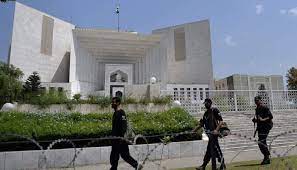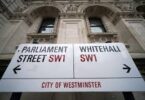Barrister Asad-ul-Mulk
This March the Supreme Court held in a reference filed by the President of Pakistan that that the proceedings of the trial by the Lahore High Court, and of the appeal by the Supreme Court, which lead to the conviction of former Prime Minister Zulfiqar Ali Bhutto, and ultimately his hanging, did not meet the requirements of the fundamental right to a fair trial and due process.
In the same breath the Supreme Court opined that in spite the egregious lapse, there was no mechanism under the law to set aside the judgment whereby Mr. Bhutto was convicted and sentenced. However, it added that the Supreme Court would; “identify the major constitutional and legal lapses that had occurred with respect to fair trial and due process”.
The advisory jurisdiction of the Supreme Court under Article 186 of the Constitution is a unique jurisdiction. It allows the President to file a reference and “obtain the opinion of the Supreme Court on any question of law which he considers of public importance”.
While it is hard to contend that there was ‘no evidence at all’ to implicate Mr. Bhutto in the murder with which he was charged, there certainly was evidence to this effect, it goes without saying that there was perhaps insufficient and incredible evidence based on which to procure his criminal conviction. Moreover, the way and manner in which his trial and conviction were procured rendered the same unsafe and a miscarriage of the criminal justice system. Thus, the conviction of Mr. Bhutto, viewed against the backdrop of Pakistan’s tumultuous political history, constitutes a historical wrong.
Historical wrongs perpetrated by Courts are not unique to Pakistan or the case of Mr. Bhutto. The decision of the US Supreme Court in Dred Scott v. Sandford (1857) is a classic example of a historical wrong. In the said case, the legal question was “Can a negro, whose ancestors were imported into this country, and sold as slaves, become a member of the political community formed and brought into existence by the Constitution of the United States, and as such become entitled to all of the rights, and privileges, and immunities, guarantied [sic] by that instrument to the citizen?”. The Court answered in the negative disenfranchising millions of people of colour and generations to come.
Another example would be Plessy v. Ferguson (1896) in which the US Supreme Court ruled that racial segregation laws did not violate the US Constitution. In Buck v. Bell (1927) the US Supreme Court held that a state statute permitting compulsory sterilization of the unfit, including the intellectually disabled, “for the protection and health of the state” was constitutional and in accordance with the Bill of Rights.
Courts around the world are empowered to re-interpret legal and constitutional texts, and ‘overrule’ past precedents, which unless overruled will result in the perpetuation of a historical wrong. The ‘overruling’ of a previous judgment is different and distinct from the ‘setting side’ of that judgment. A judgment is said to be ‘set aside’ when the ultimate decision in that judgment, as well as the logical basis for it are declared to be flawed. Conversely a judgment is said to be ‘overruled’ when, a fresh case different and distinct from the original one in which the judgment was delivered comes before the Court for adjudication, and the Court rules that the logical basis of the original judgment is flawed and will not be followed in the fresh case or any future case.
Overruling does not disturb the original judgment, but it puts an end to the perpetuation of a historical wrong by preventing the future application of law in a manner which has subsequently been found to be flawed. This was essentially the device which was employed by the US Supreme Court in Brown v. Board of Education (1954) to effectively overrule Plessy v. Ferguson (1896).
While the Supreme Court of Pakistan is correct in opining that there is no mechanism to set aside the conviction of Mr. Bhutto, it is hard to imagine that the Constitution ever envisaged the advisory jurisdiction of the Supreme Court to be invoked in respect of a case in which the Supreme Court has already delivered a judgment. Any opinion of the Supreme Court which differs from or casts aspersions on the legality and proprietary of a decided case, would necessarily be based on the reevaluation of evidence before and the examination of the procedure followed by the Court which decided the original lis. And to undertake such an exercise would mean inverting the notion of ‘finality of proceedings’ on its head.
The judgment in Mr. Bhutto’s case carries with it an irrebuttable legal presumption of being in accordance with the fundamental right to a fair trial and due process, even if it is in fact not. For the Supreme Court in its advisory jurisdiction to opine otherwise would mean casting aspersions on that irrebuttable legal presumption.
“We are not final because we are infallible, but we are infallible only because we are final”, those are the famous words of Justice Robert Jackson of the US Supreme Court in Brown v. Allen (1953). Courts make mistakes, sometimes those mistakes are egregious, sometimes so egregious that they constitute historical wrongs. But to condemn historical wrongs, the Court should not turn the law on its head or pretentiously stretch the meaning of the Constitution.
It is widely believed that Dr. Samuel Mudd, was wrongly convicted for conspiring with John Wilkes Booth in the assassination of President Abraham Lincoln in 1865. The assassination of President Lincoln is perhaps the most famous assassination in the history of the US. Subsequent research has revealed that Dr. Mudd was indeed innocent. The state legislatures of Maryland, Michigan, Massachusetts, Oklahoma and Florida have passed resolutions declaring Dr. Mudd’s innocence.
In 1979, President Jimmy Carter wrote to the grandson of Dr. Mudd a two-page letter supporting his position about Dr. Mudd’s innocence, however he regrettably added he “had been advised [that] the findings of guilt and the sentence of a military commission that tried Dr. Samuel Mudd are binding and conclusive judgments and there is no authority under the law, by which, I, as President, could set aside his conviction”.
Ten years later in 1987, President Ronald Reagan in his own note echoed a President’s legal inability to change a military Court ruling, and inscribed; “In my efforts to help, I came to believe as you do that Dr. Samuel Mudd was indeed innocent of any wrongdoing”.
Thereafter an attempt was made inviting the US Supreme Court to undo the historical wrong done to Dr. Mudd, and remove his unsafe conviction in the commission of nation’s most famous murder, but the US Supreme Court refused citing grounds of limitation and other legal hurdles.
Historical wrongs are condemnable. The appropriate place to condemn them is in society and politics. The Courts may also condemn historical wrongs, but only when that is possible, and in a manner which is envisaged by law. The employment of the Supreme Court’s advisory jurisdiction, which was conceived for an altogether different purpose, to expose a historical wrong seems quite a stretch of that jurisdiction.
A society and nation that is conscious, needs the affirmation of no Court to establish the wickedness of a historical wrong. And a society and nation that is not conscious, will in spite the affirmation of a historical wrong by a Court, recommit it.







